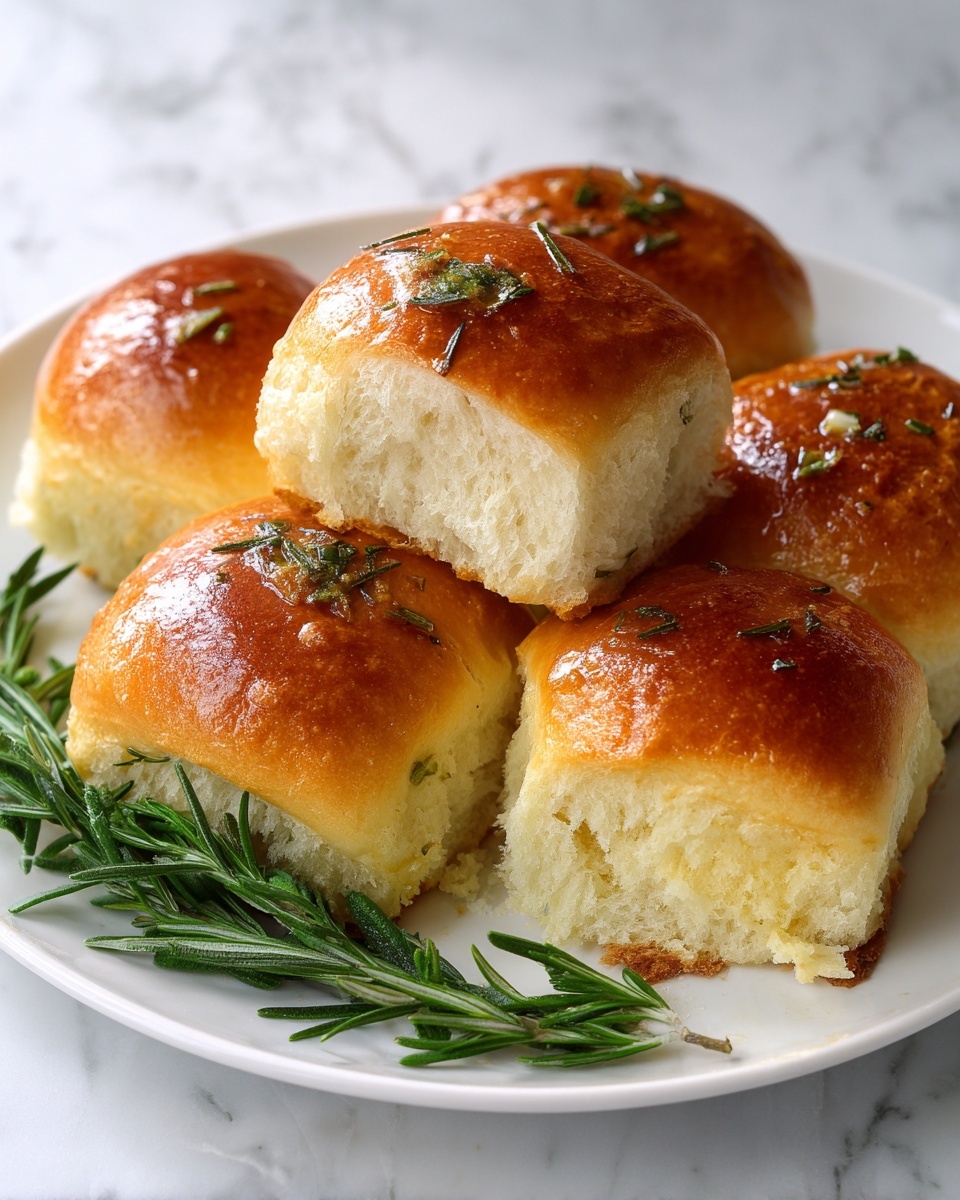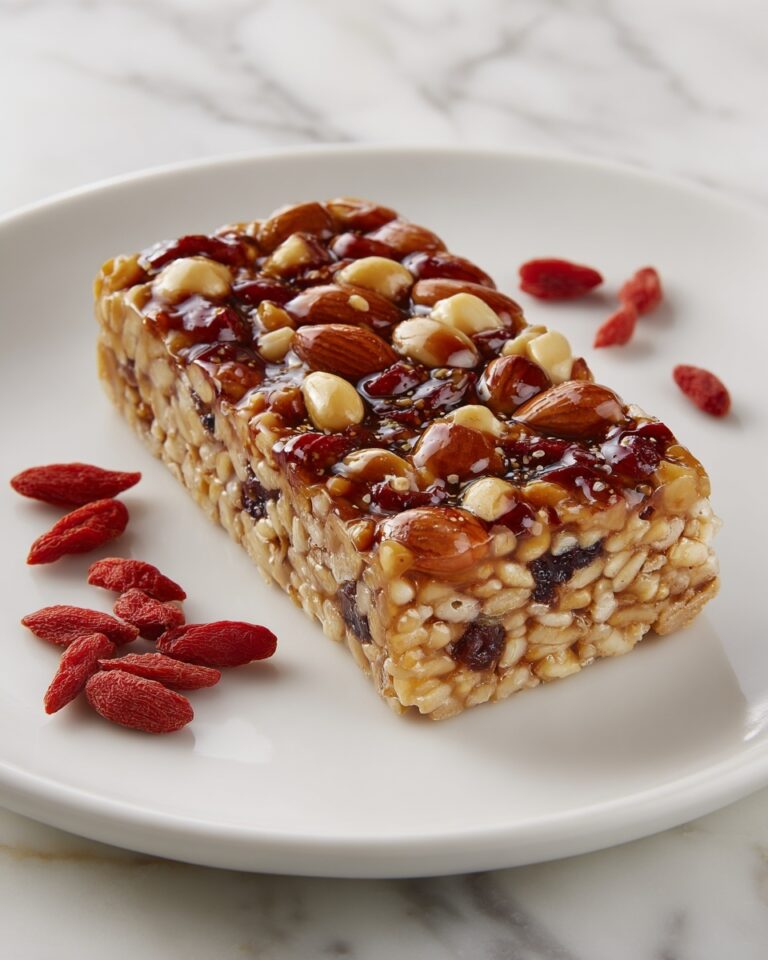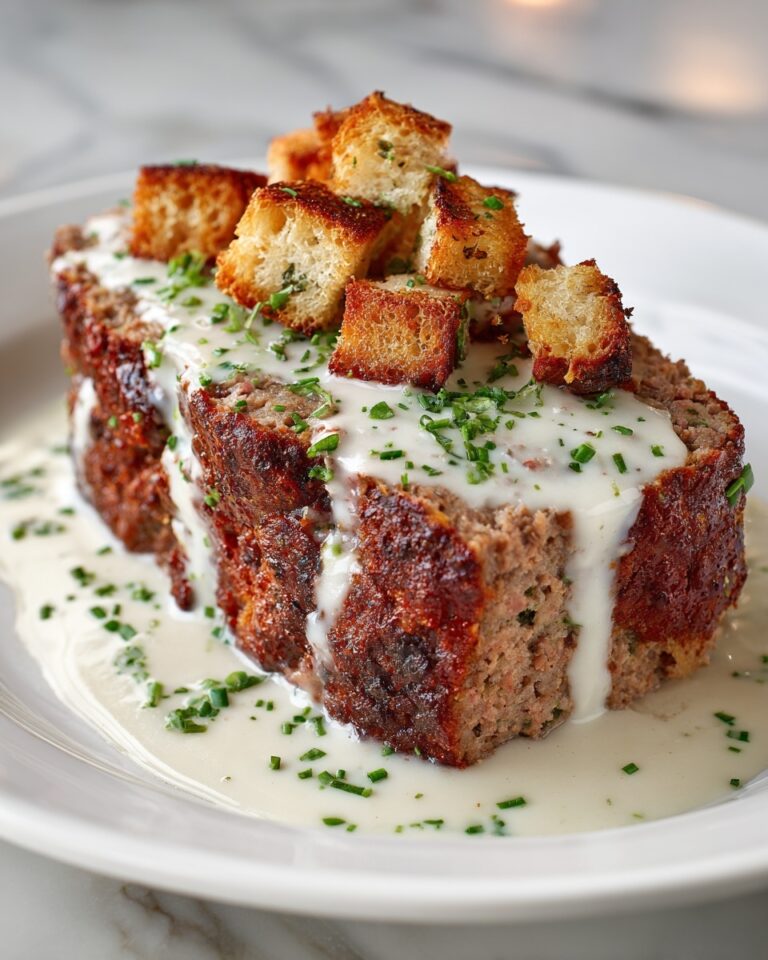If you’ve ever yearned for a warm, fluffy bread that feels like a big, comforting hug fresh from the oven, then you’re in for a real treat with Grandma’s Rosemary Dinner Rolls Recipe. This classic recipe brings together the fragrant earthiness of fresh rosemary with the soft, pillowy texture of tender rolls, creating a simple yet unforgettable addition to any meal. Whether you’re a seasoned bread-maker or just starting out, these rolls will quickly become a staple that fills your kitchen with the irresistible aroma of home.
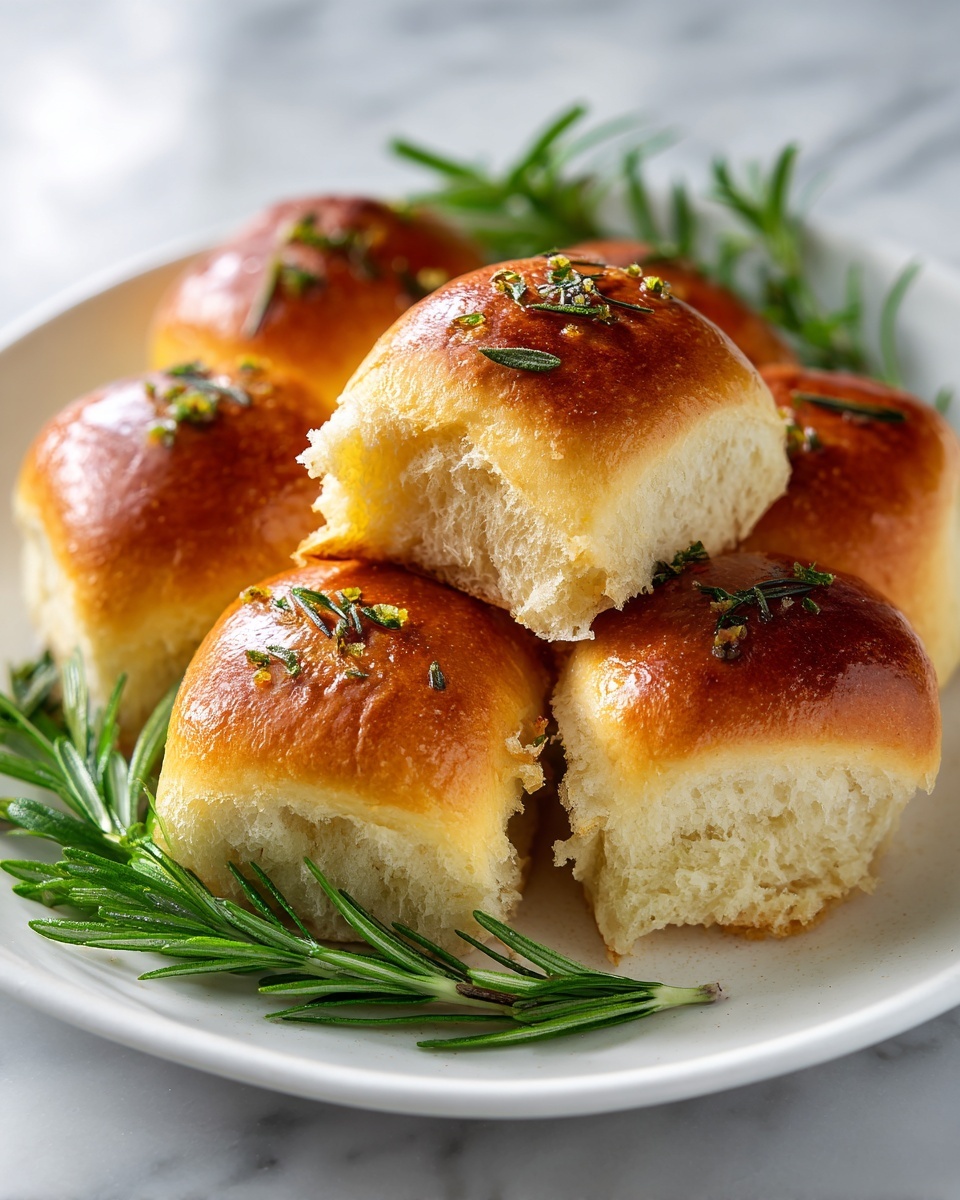
Ingredients You’ll Need
Gathering your ingredients is the first step to baking these delightful rolls. The simplicity here is key, with each component playing a vital role in achieving that perfect flavor, texture, and golden color that Grandma would be proud of.
- 3 1/2 cups all-purpose flour: The sturdy base that gives your rolls structure and chew.
- 1 packet active dry yeast (2 1/4 tsp): Yeast is the magic ingredient that makes the dough rise into light and airy rolls.
- 1 cup warm water (110°F/43°C): Just the right warmth to wake up the yeast without killing it.
- 1/4 cup granulated sugar: Adds a subtle sweetness that balances the savory rosemary.
- 1/4 cup butter, melted: Brings richness and tenderness to the dough.
- 1 large egg: Helps bind the dough and adds a beautiful golden hue.
- 2 tbsp fresh rosemary, chopped (plus extra for topping): The star herb giving these rolls their signature fragrant punch.
- 1 tsp salt: Enhances all the flavors and controls yeast activity.
- 1 tbsp olive oil (for greasing the bowl): Prevents sticking and keeps your dough happy during rising.
- 1 tbsp butter (for brushing after baking): Adds a finishing touch of shine and flavor right out of the oven.
How to Make Grandma’s Rosemary Dinner Rolls Recipe
Step 1: Activate the Yeast
Begin by waking up the yeast in a small bowl with warm water and sugar. This simple step ensures your yeast becomes foamy and lively, setting the stage for perfectly risen rolls filled with airy goodness.
Step 2: Prepare the Dough
Mix the flour, salt, and chopped rosemary in a large bowl. Then add the yeast mixture, melted butter, and egg. Stir until the dough starts coming together, then knead it on a floured surface until smooth and elastic—about 8 to 10 minutes. This kneading develops the gluten that gives you soft, springy rolls.
Step 3: First Rise
Grease a large bowl with olive oil and place your dough inside. Cover it with a clean towel, then let it rest in a warm spot for 1 to 1.5 hours. Patience pays off as you watch it double in size, readying the dough for the next stage.
Step 4: Shape the Rolls
Punch down the dough to release the air, then divide it into 12 equal pieces. Roll each piece into a smooth ball and arrange them in a greased 9×13-inch pan or a baking sheet. Leave a little space between each to allow them room to grow.
Step 5: Second Rise
Cover your rolls once again and let them rise for about 30 to 45 minutes until they’re puffed and doubled. This step ensures a light, airy texture inside with a beautiful crust outside.
Step 6: Bake the Rolls
Preheat your oven to 375°F (190°C) and bake the rolls for 15 to 20 minutes. You’ll know they’re done when their tops turn a gorgeous golden brown—this is when the smell gets truly irresistible.
Step 7: Brush with Butter
Right out of the oven, brush your rolls with melted butter and sprinkle with extra chopped rosemary. This finishing touch adds shine, extra flavor, and a lovely herbaceous aroma that will have everyone reaching for seconds.
Step 8: Serve & Enjoy
Let the rolls cool just enough to handle before serving. They are perfect warm, still buttery and fragrant, ready to be enjoyed alongside any meal or on their own with your favorite jam or cheese.
How to Serve Grandma’s Rosemary Dinner Rolls Recipe
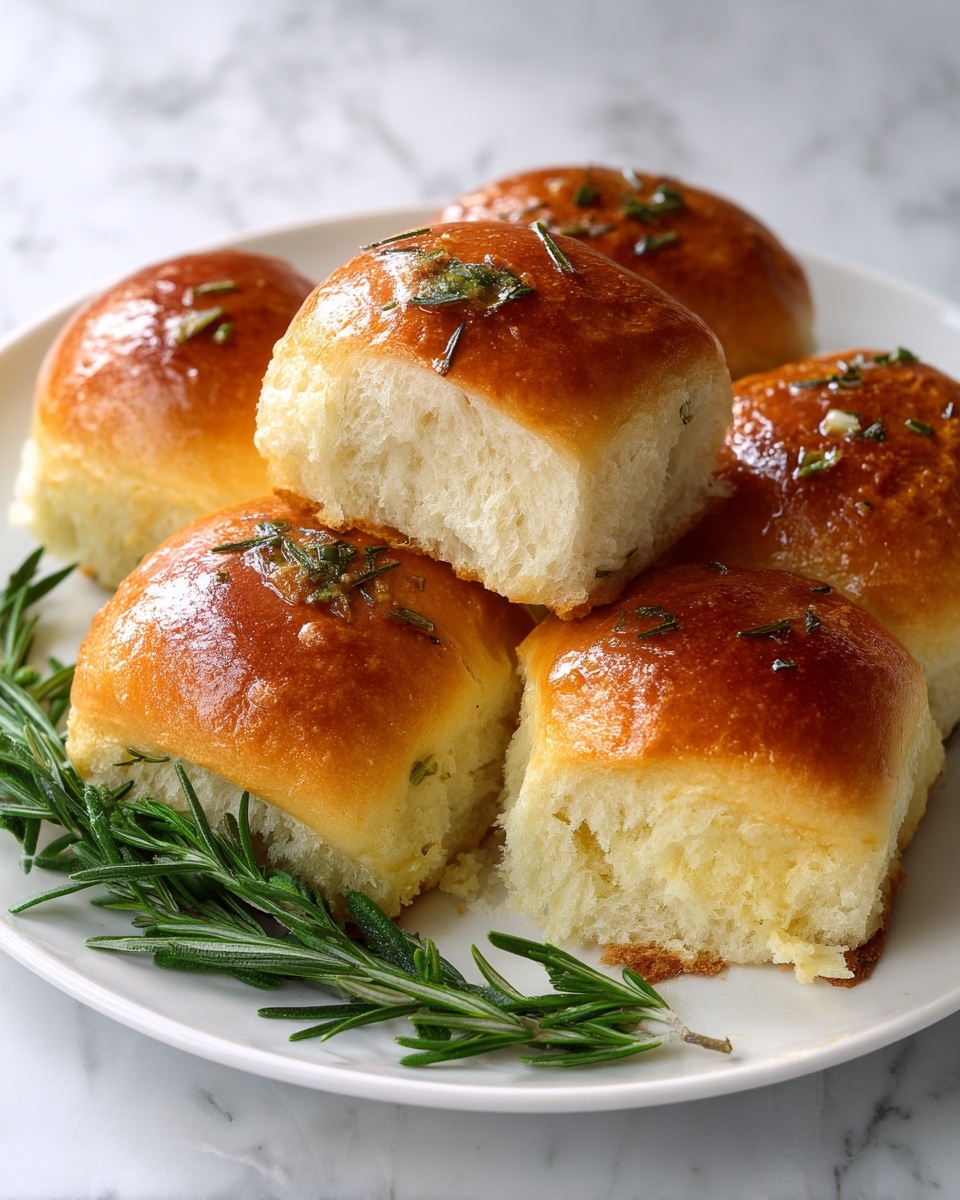
Garnishes
For an elegant touch, sprinkle a pinch of flaky sea salt or a few fresh rosemary needles on top just before serving. These little details enhance the herbaceous notes and add a subtle texture contrast to your rolls.
Side Dishes
These rolls are a dream alongside hearty soups like tomato basil or creamy chicken stew, as well as with roasted vegetables or a fresh garden salad. Their tender crumb is the perfect companion to soak up sauces and savor every bite.
Creative Ways to Present
Try serving these rolls in a rustic basket lined with a cloth napkin, or arrange them in a circle on a platter with a small bowl of herbed butter or olive oil dip in the center. It makes for a charming centerpiece that’s as inviting as the rolls themselves.
Make Ahead and Storage
Storing Leftovers
If you have leftovers, keep the rolls in an airtight container or zip-top bag at room temperature for up to two days. This helps retain their softness and fresh-baked flavor without drying out.
Freezing
To enjoy these rolls later, freeze them individually wrapped in plastic and then placed in a freezer bag. They’ll stay good for up to three months, allowing you to savor Grandma’s Rosemary Dinner Rolls Recipe any time you crave them.
Reheating
Reheat frozen rolls by wrapping them in foil and warming them in a 350°F (175°C) oven for about 10-15 minutes. Alternatively, a quick microwave zap wrapped in a damp paper towel will bring back their softness in seconds.
FAQs
Can I use dried rosemary instead of fresh?
Yes, you can substitute dried rosemary, but use about one-third of the amount called for fresh to avoid overpowering the rolls. Fresh rosemary gives a brighter, more vibrant flavor that really shines in this recipe.
What temperature should the water be when activating the yeast?
The water should be warm but not hot, ideally around 110°F (43°C). Too hot and it risks killing the yeast; too cold and the yeast won’t activate properly, which impacts how well your dough rises.
How do I know when the rolls have risen enough?
The dough should double in size during each rise. A good test is gently pressing a finger into the dough—if the indentation slowly springs back, they’re perfectly risen and ready for the next step.
Can I make these rolls gluten-free?
Unfortunately, this recipe relies on gluten development for its texture, so converting it to gluten-free would require substantial changes. However, there are many excellent gluten-free roll recipes that capture a similar herb-flecked charm.
What if I don’t have olive oil for greasing the bowl?
Feel free to use any neutral-tasting oil or even melted butter for greasing. The goal is simply to prevent sticking during the rise, so a light coating of any fat will do the trick.
Final Thoughts
There’s something truly special about baking bread from scratch, especially with a recipe as cozy and fragrant as Grandma’s Rosemary Dinner Rolls Recipe. It’s not just about the rolls themselves but the warm memories and smiles they bring to the table. I encourage you to try this recipe—you’ll soon find it’s your go-to roll for dinners, celebrations, or any time you want to feel a little closer to home.
Print
Grandma’s Rosemary Dinner Rolls Recipe
- Prep Time: 15 minutes
- Cook Time: 20 minutes
- Total Time: 1 hour 50 minutes
- Yield: 12 rolls
- Category: Bread
- Method: Baking
- Cuisine: American
Description
Grandma’s Rosemary Dinner Rolls are soft, fluffy bread rolls infused with fresh rosemary and a buttery finish. Perfect as a side for any meal, these homemade rolls are easy to make with simple ingredients and bake to a golden brown perfection.
Ingredients
Dough Ingredients
- 3 1/2 cups all-purpose flour
- 1 packet active dry yeast (2 1/4 tsp)
- 1 cup warm water (110°F/43°C)
- 1/4 cup granulated sugar
- 1/4 cup butter, melted
- 1 large egg
- 2 tbsp fresh rosemary, chopped (plus extra for topping)
- 1 tsp salt
Other Ingredients
- 1 tbsp olive oil (for greasing the bowl)
- 1 tbsp butter (for brushing after baking)
Instructions
- Activate the Yeast: In a small bowl, combine the warm water, sugar, and yeast. Let it sit for about 5 minutes until the yeast becomes foamy, indicating that it is active and ready to use.
- Prepare the Dough: In a large mixing bowl, combine the flour, salt, and chopped rosemary. Add the foamy yeast mixture, melted butter, and egg. Stir to combine, then transfer to a floured surface and knead the dough for 8-10 minutes until smooth and elastic, which helps develop gluten for a tender texture.
- First Rise: Grease a large bowl with olive oil to prevent sticking. Place the dough inside and cover it with a clean kitchen towel. Let it rise in a warm place for about 1 to 1.5 hours, or until it has doubled in size, allowing the yeast to ferment and the dough to become airy.
- Shape the Rolls: Once risen, punch down the dough gently to release trapped air. Divide the dough into 12 equal portions and roll each portion into a ball. Arrange the rolls in a greased 9×13-inch baking dish or on a baking sheet, spacing them slightly apart for even baking.
- Second Rise: Cover the shaped rolls with a towel and let them rise again for 30-45 minutes, or until puffed and doubled. This second proofing helps achieve a light, fluffy interior.
- Bake the Rolls: Preheat the oven to 375°F (190°C). Bake the rolls for 15-20 minutes, or until golden brown on top, indicating they are thoroughly cooked and have a beautiful crust.
- Brush with Butter: Immediately after baking, brush the hot rolls with melted butter and sprinkle with extra chopped rosemary. This adds flavor and a lovely sheen.
- Serve & Enjoy: Allow the rolls to cool slightly before serving to let the texture set. Enjoy these warm, fragrant dinner rolls alongside your favorite dishes.
Notes
- Use warm water at about 110°F (43°C) to properly activate the yeast without killing it.
- Kneading the dough thoroughly is important for a soft texture.
- Ensure the dough doubles in size during rising for best results.
- Brush the rolls with butter immediately after baking for a shiny, flavorful crust.
- Fresh rosemary can be substituted with dried rosemary; reduce the amount by half for a less intense flavor.

